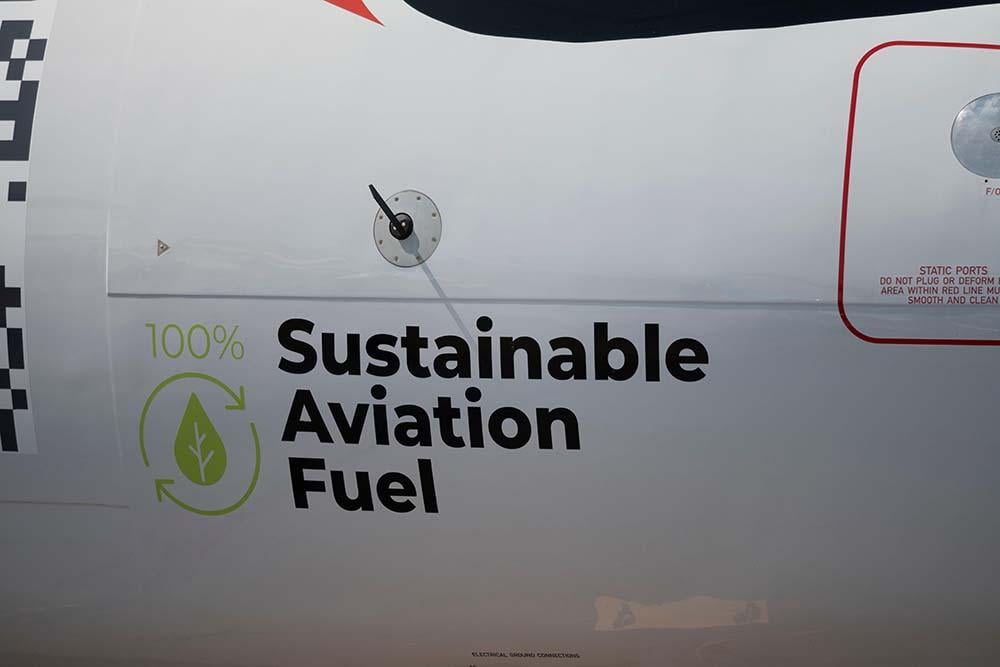Risk Sharing Key To SAF Production, Experts Say

AMSTERDAM—Sustainable aviation fuel is the only “realistic” option to make a dent in aviation emissions in the short to medium term, agreed panelists in the Go Live! Theater at Aviation Week’s 2023 MRO Europe event in Amsterdam.
However, they also outlined the enormous challenges involved in scaling up sustainable aviation fuel (SAF) production from a few hundred million liters today to an expected requirement of roughly 500 billion liters annually by 2050.
That requirement is driven by aviation’s ambition to reach net zero emissions by 2050, but a nearer-term revolution in production is also needed just to meet the European Union’s target of 6% SAF use by 2030.
To make this happen, the panelists favored a combination of incentives and penalties allied with long-term commitments, noting that few countries have gotten the mix right yet.
“Ideally you have a hybrid approach,” said Yann Cambier, director of aviation and transport at consultancy ICF.
“Europe is going for the stick with its mandate—that if airlines don’t meet targets for 2030 and 2050 they will have penalties—but at least the mandate is clear,” he added. “In the U.S. they go with the carrot and incentives, and it has had a much better effect in terms of fostering projects because they are subsidized. But a lot of the incentives expire in 2027 and it is unclear whether they will be renewed.”
Another big question for SAF production is how to vault the so-called ‘green premium hurdle’. This requires SAF production to reach sufficient scale that its price falls to the level of Jet A. Massive investment is needed to achieve this, which will only materialize if investors see guaranteed demand, but airlines will only create that demand if they can lock in much lower pricing than is currently possible—a classic ‘first mover’ problem.
“There is an element of risk that needs to be shared to coalesce stakeholders at the same place and the same time,” said Mark Stolze, Boeing’s head of enterprise sustainability, adding: “There are clear demand signals, we just need to get over that green premium hurdle.”
Boeing buys SAF for its own operations, both for sustainability and to help get projects off the ground, while airlines buy up almost every drop of SAF currently produced, despite higher prices, although volumes remain tiny.
“Where SAF is subsidized it’s the most affordable,” said Andre Morgenbrodt, regional manager for air logistics in Europe at Kuehne + Nagel. “But we need more investments from countries other than the UK, U.S. and the Netherlands.”
These investments are needed not just to help scale up production, but also to develop nascent technologies upon which future production will depend.
“[Hydrogenated esters and fatty acids] SAF is the primary pathway today,” noted Stolze. “The feedstock for that is used cooking oil but that will not be what transitions us to the sufficient scale.”
Morgenbrodt agreed: “We will need synthetic SAF as well but at the moment it is very expensive.”
Floor Vogels, project lead for SAF supplier SkyNRG, said that for time being SAF will remain expensive, possibly becoming even more so as new production technologies come on line, while also noting growing demand from the corporate sector and from airlines to boost their sustainability credentials.
These developments have encouraged Stolze as well, who is optimistic despite the enormous amount of work ahead for SAF production.
“We’ve laid a lot of groundwork and we think we will be able to get there,” said Stolze.




